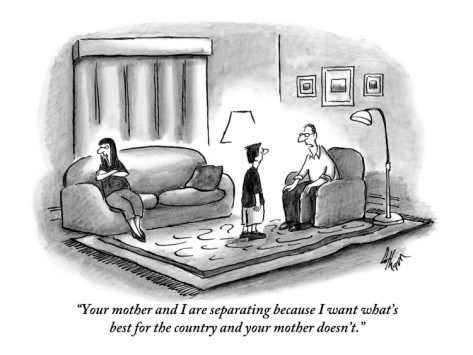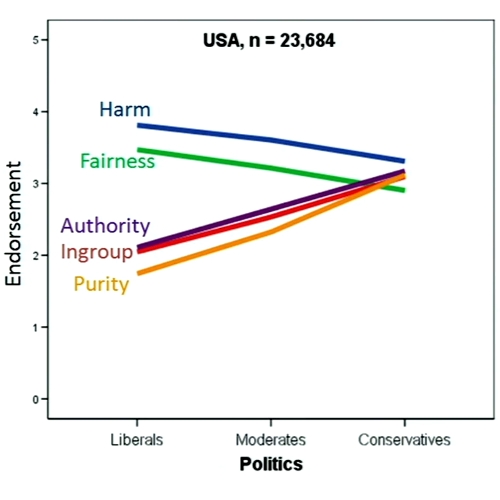I’ll start with a definition. Many associate moral relativism with the view that no moral directives are justified or true. They then worry that moral relativists must think that any moral directive is as good or plausible as any other and so anything goes. But this is mistaken. Moral relativists think moral directives can be justified, but the justification of moral directives is relative to the beliefs, values or commitments of a group of people. This means that moral directives aren’t objective in the sense of applying regardless of people’s beliefs, values or commitments. Their justification, and the legitimacy of holding people to them, depends on their beliefs, values and commitments.
Here’s the argument:
This view about the connection between the requirements of practical reason and the requirements of morality is a species of moral rationalism. Moral rationalists usually say that the requirements of morality are practically decisive, but I only say that claims of morality purport to provide reasons for action that have greater deliberative significance or oomph than other practical directives. This version of the thesis avoids, on the one hand, the suggestion that morality has absolute weight in practical deliberations, and, on the other hand, the implication that morality is merely a system of hypothetical imperatives.
Premise 2 is a statement of existence internalism about the connection between reasons and motives. It is very often associated with Neo-Humean theories of motivation. Some consideration provides an agent with a genuine normative reason for action only if it is capable of playing a motivational role in her deliberations. This is just what it means for some consideration to be a reason for the agent. This statement of internalism, then, is a thesis about what has to be true in order for a reason statement truly to apply to an agent. It must connect up with things the agent cares about, or which are deliberatively accessible. This means that externalists about reasons and motivation are wrong to think that an agent has a reason for action when the proffered considerations are deliberatively inaccessible. An agent cannot sensibly be said to possess a reason that is deliberatively inaccessible to her, and so it cannot be a reason for her. The externalist could say, “Tuff. We’ll still apply the reason statement to her,” even if the proffered considerations are deliberatively inaccessible from her point of view. But that makes it sound less like the kind of thing that we should see as an authoritative directive and more like the kind of thing that would be an authoritarian directive.
The conclusion in 3 is a thesis about how to identify the contours of genuine moral directives. Understood this way, premise 2 is presenting answers to the questions raised by premise 1. Moral directives essentially claim that some agent has a significantly weighty reason to act (or avoid acting) in some way. They purport to direct others authoritatively. What, if anything, could possibly justify these claims? Premise 2 suggests the response that moral claims directed to an agent are appropriately justified in terms of considerations that are reasons for her. It follows, then, that moral directives have authoritative normativity when (and because) they are grounded in her rational and evaluative commitments; the authority that grounds these claims is her own.
In other words, the connection between normative reasons and motivation (in 2), and so the connection between morality and motivation (in 3), is read in such a way that an appropriate connection to motivation is what makes it the case that R is a genuine reason for action and M is a genuine moral directive. This is moral relativism. The most obvious objection is that moral relativism just gets the contours of morality badly wrong. Doing the moral thing cannot be so easy – like shooting an arrow, drawing a circle around where it lands and calling it a ‘bulls-eye.'
Here’s the argument:
1. M is a distinctively moral directive only if it provides reasons for acting.
2. R is a genuine reason for action for an agent only if it is capable of motivating that agent.
3. Therefore, M is a moral directive only if it is capable of motivating an agent.Premise 1 is a statement of internalism about morality and reasons. It is a conceptual claim about the semantics of moral directives: claims of morality are essentially normative in the sense that there’s a necessary connection between them and practical reason. Moral claims employ terms that are evaluative, action-guiding and prescriptive. Of course, many non-moral claims, like judgments of etiquette, aesthetics, and prudence, have this semantic feature, as well. Some philosophers have exploited this fact in an attempt undermine morality/reasons internalism. But morality is supposed to be distinctive from etiquette, aesthetics, and prudence in the categoricity or authoritativeness of the claim. Something that’s a genuine M has ‘practical clout’ or ‘oomph’, such that someone who said ‘I know it’s M, but I don’t really care about M’ is making some kind of mistake. A moral directive adverts to reasons or considerations that cannot be legitimately shrugged off in this facile way.
This view about the connection between the requirements of practical reason and the requirements of morality is a species of moral rationalism. Moral rationalists usually say that the requirements of morality are practically decisive, but I only say that claims of morality purport to provide reasons for action that have greater deliberative significance or oomph than other practical directives. This version of the thesis avoids, on the one hand, the suggestion that morality has absolute weight in practical deliberations, and, on the other hand, the implication that morality is merely a system of hypothetical imperatives.
Premise 2 is a statement of existence internalism about the connection between reasons and motives. It is very often associated with Neo-Humean theories of motivation. Some consideration provides an agent with a genuine normative reason for action only if it is capable of playing a motivational role in her deliberations. This is just what it means for some consideration to be a reason for the agent. This statement of internalism, then, is a thesis about what has to be true in order for a reason statement truly to apply to an agent. It must connect up with things the agent cares about, or which are deliberatively accessible. This means that externalists about reasons and motivation are wrong to think that an agent has a reason for action when the proffered considerations are deliberatively inaccessible. An agent cannot sensibly be said to possess a reason that is deliberatively inaccessible to her, and so it cannot be a reason for her. The externalist could say, “Tuff. We’ll still apply the reason statement to her,” even if the proffered considerations are deliberatively inaccessible from her point of view. But that makes it sound less like the kind of thing that we should see as an authoritative directive and more like the kind of thing that would be an authoritarian directive.
The conclusion in 3 is a thesis about how to identify the contours of genuine moral directives. Understood this way, premise 2 is presenting answers to the questions raised by premise 1. Moral directives essentially claim that some agent has a significantly weighty reason to act (or avoid acting) in some way. They purport to direct others authoritatively. What, if anything, could possibly justify these claims? Premise 2 suggests the response that moral claims directed to an agent are appropriately justified in terms of considerations that are reasons for her. It follows, then, that moral directives have authoritative normativity when (and because) they are grounded in her rational and evaluative commitments; the authority that grounds these claims is her own.
In other words, the connection between normative reasons and motivation (in 2), and so the connection between morality and motivation (in 3), is read in such a way that an appropriate connection to motivation is what makes it the case that R is a genuine reason for action and M is a genuine moral directive. This is moral relativism. The most obvious objection is that moral relativism just gets the contours of morality badly wrong. Doing the moral thing cannot be so easy – like shooting an arrow, drawing a circle around where it lands and calling it a ‘bulls-eye.'
As I said, I’m not so worried anymore about this implication, but I can say more in the comments. What’s attractive to me about relativism is that it secures the distinctive authoritative status of moral judgments without authoritarian bossing around.
Kyle Swan
Department of Philosophy
Sacramento State



